Water Sensitive Urban Design
- Details
- Written by: Jeremy Bentvelzen Penrith City Council (02) 4732 7777 (02) 4732 7958 council@penrithcity.nsw.gov.au https://www.penrithcity.nsw.gov.au 601 High St Penrith NSW 2750 Australia
What is Water Sensitive Urban Design (WSUD)?
WSUD is the sustainable management of water in urban areas through intelligent and integrated design. It considers all aspects of the urban water cycle including potable (drinking quality) water, rainwater, wastewater, stormwater and groundwater.
Key principles include:
- Minimising the impact of urbanisation on the natural water cycle
- Protecting and enhancing the natural aspect of landscapes
- Treating urban stormwater for reuse or release to receiving waters
- Reducing drinking water demand through water efficiency, stormwater harvesting and wastewater reuse, and
- Integrating vegetated stormwater treatment and harvesting systems into the landscape to provide microclimate benefits that reduce the 'urban heat island effect'.
Stormwater impacts
When rain falls on vegetated areas such as bushland it is filtered by soil and plants, and soaks back into the ground. When rain falls on hard surfaces such as rooftops and roads it cannot soak into the ground and becomes stormwater runoff. Stormwater runoff picks up pollution such as dirt, chemicals, and litter, carrying them into stormwater drains and into waterways. These pollutants contain nutrients that can cause algal growth.
Why is WSUD important?
Urban development has a significant impact on the natural water cycle. The integration of WSUD design principles into urban planning helps mimic natural process and ensures that waterways are protected by reducing stormwater runoff and peak flows, minimising consumption of potable water through rainwater harvesting, and helping to reduce urban heat through evapotranspiration.
WSUD devices on private property
Newly constructed residential, commercial, or industrial premises may have a least one type of stormwater treatment devices such as raingardens.
Owners of such devices are to maintain and replace them when required. A maintenance plan is required and should outline cleaning schedule and replacement time frames.
The Managing your SQUIDS Assets factsheet may provide guidance on managing different devices.
Examples of water sensitive urban design treatment devices are provided below.
WSUD treatment devices
WSUD management implements a variety of different treatment devices. Council recommends vegetated systems, as these mimic natural systems. The treatment devices include but are not limited to Bioretention basin, Raingardens, Grass swales, Rainwater tanks, Gross Pollutant Traps (GPTs), Filter Cartridges and Green roofs.
Bioretention basins
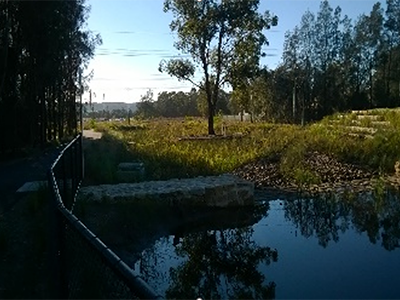
Bioretention systems are vegetated soil media filters, which treat stormwater by allowing it to pond on the vegetated surface, then slowly infiltrate through the soil media. Treated water is captured at the base of the system and discharged via outlet pipes.
Raingardens
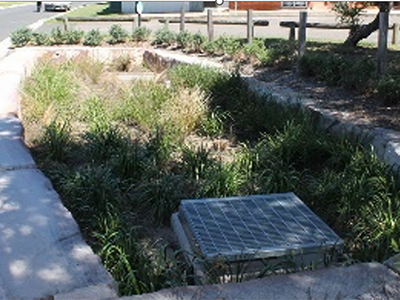
Raingardens are one type of design used to treat stormwater runoff. Raingardens are small bioretention systems build on residential and industrial lots.
Swales
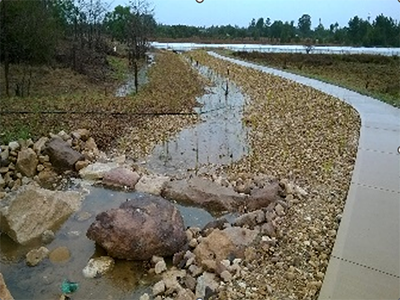
Swales are channels with gently sloping sides. They can be lined with grass or a variety of dense vegetation. Swales convey stormwater while screening and removing pollutants.
Rainwater tanks
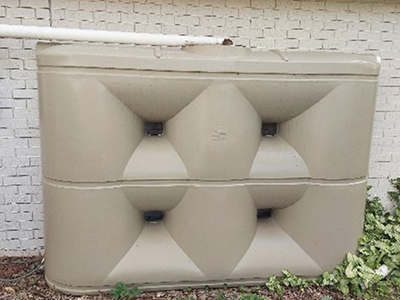
Rainwater tanks are used to collect rainwater runoff from roof areas. Rainwater tanks reduce harm done to natural waterways by reducing the volume of water entering the waterways and reusing it. Rainwater tanks can be used for flushing toilets, washing clothes, and irrigating gardens.
Gross Pollutant Traps (GPTs)
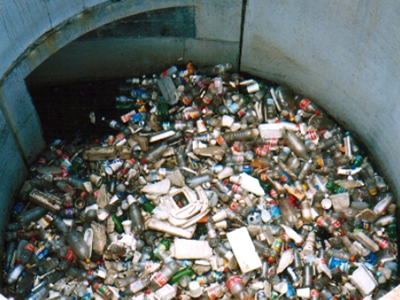
Gross Pollutant Traps (GPTs) capture litter, sediment and debris that is washed into the stormwater system. GPTs prevent pollution from entering the rivers and streams. GPTs are mostly proprietary products that come in a variety of size, functions and maintenance requirements.
Filter cartridges
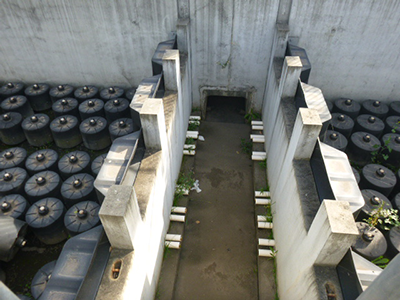
Filter cartridges are proprietary products that are designed to filter fine pollution, such as nitrogen, phosphorus, fine solids, oil, and other nutrients.
Filter cartridges may require pretreatment such as a GPT upstream and are located underground in filter chambers.
Constructed wetlands
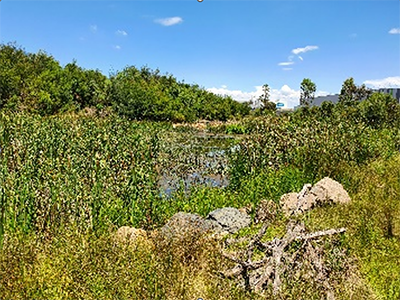
Constructed wetlands are man-made ponds that form a series of shallow, densely planted areas that help filter water through physical and biological processes. They provide a natural way to treat and remove pollutants from stormwater.
Permeable paving
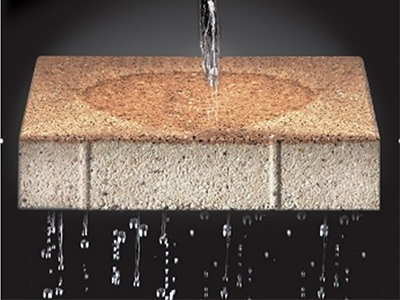
Permeable pavements are porous surfaces which overlay an aggregate layer of crushed stone or gravel. Stormwater runoff passes through the permeable pavement to the aggregate layer before it is discharged to a piped drainage system. This process reduces the peak flow site runoff by delaying time for water to enter drainage system and improves the quality of stormwater runoff by removing site pollutants.
Council’s WSUD Projects
Mountain View Reserve
In July 2013, Council was successful in receiving $1.8 million in funding from the Australian Government to undertake a restoration project over four years. The project aimed to restore a regionally significant wetland (“Wetland 156”) and adjacent Cumberland Plain Woodland bushland. The project has improved the quality of water entering the Penrith Lakes and the Hawkesbury-Nepean System and increased the amount and quality of habitat for wetland flora and fauna. It will also improve the condition and resilience of the bushland and increase its extent through bush regeneration, revegetation and associated activities. Improving community access and appreciation of the reserve has also been a key objective.
The initial focus of this project was on stormwater treatment because the site is immediately upstream of the Penrith Lakes system, as well as to improve the condition of a regionally significant natural wetland and adjacent Cumberland Plain Woodland. In addition, this stormwater treatment project provides opportunities for a range of other ecological and community liveability benefits. It has also significantly improved and activated the site with features such as walking paths, a viewing platform, a bird hide and informative signs and sculptures.
Mountain View Reserve is now a highly valued community asset with significantly improved amenity. Stormwater runoff from the surrounding urban area is treated through a swale, a raingarden and a constructed wetland, and the natural wetland on site is now more resilient and home to many more birds, reptiles and frogs. Sugar gliders have also been found in the bushland on the site. The presence of these animals demonstrates the great work that has been undertaken across the whole reserve to help restore its natural areas in what is a great outcome for our City.
More information on the project is at the following link.https://www.penrithcity.nsw.gov.au/waste-environment/environment/biodiversity
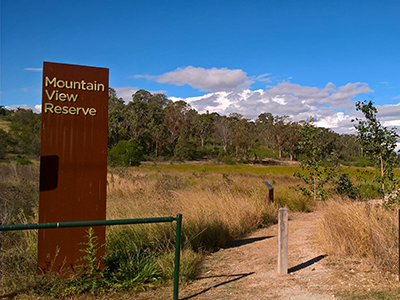
Mountain View Reserve
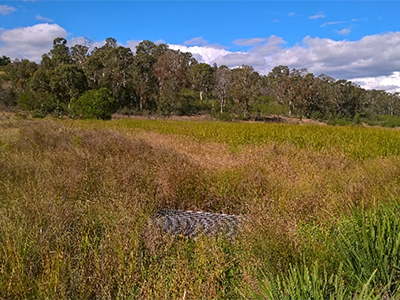
Constructed Stormwater Treatment Wetland
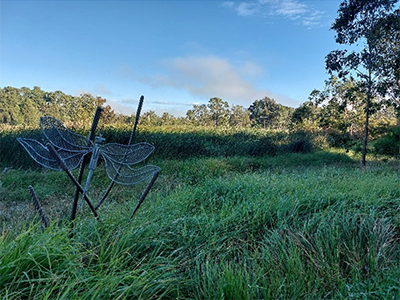
Constructed Wetland
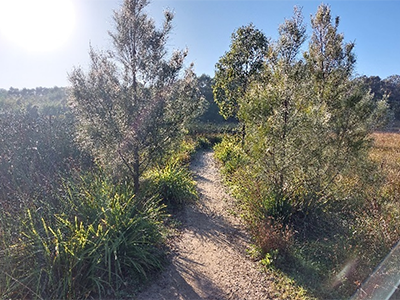
Walkway between the wetlands
Peach Tree Creek bank stabilisation
Peach Tree Creek had become highly eroded which had become unstable and unsafe to the public. To mitigate the risk bank stabilisation and revegetation works were completed over a 140-metre length of the Peachtree Creek Riparian Corridor located within Weir Reserve adjacent to the Penrith Rowing Club.
The project’s key objectives were to:
- Stabilise the eroding banks and protect public and private assets from stream processes of deepening and /or widening
- Improve public safety along the subject reach riparian zone, and
- Provide appropriate access to the waterway for operations and maintenance
Key benefits of the project include reduced soil entering the Nepean River as a result of erosion, improved ecological integrity of the creeks riparian corridor and an improvement to public safety within Weir Reserve.
The works involved the excavation and reshaping of the eroded and unstable creek bank. The newly reshaped bank was then armoured with large rocks to ensure its long-term stability, before being revegetated with native vegetation.
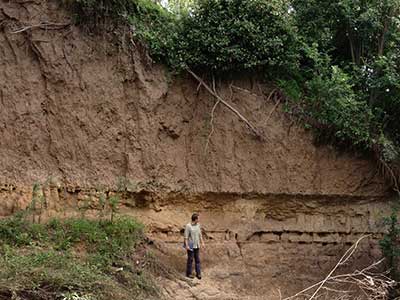
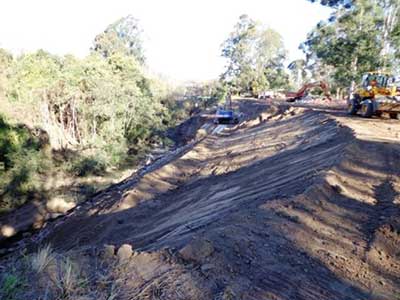
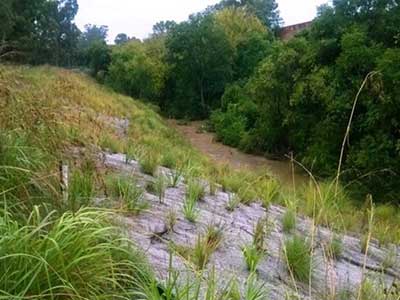
The project was completed in April 2015. The photos show the various stages of the construction process and include a design of the restoration works.
Andrews Road Bioretention Basin
To improve stormwater entering Waterside Lakes development, Penrith Lakes and the Nepean River council constructed a 2,400m2 bioretention basin along Andrews Road. The project was allocated $1.2million and funded through councils Stormwater Management Service Charge. The bioretention basin was designed with a low flow diversion which assists in capturing litter, the main basin uses layers of soil and gravel for filtration and is planted with a combination of native plants and grasses. The plants and filter material remove nitrogen and phosphates from the stormwater. The bioretention system treats and reduces the amount of stormwater that would otherwise wash pollutants into our rivers and creeks
For further information on how bioretention basins please refer to the What is a Bioretention system and what does it do? fact sheet.
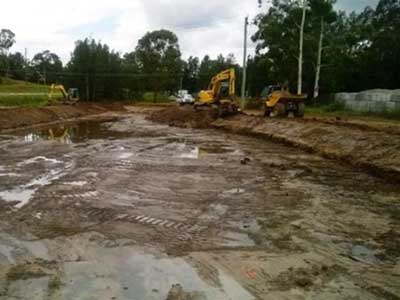
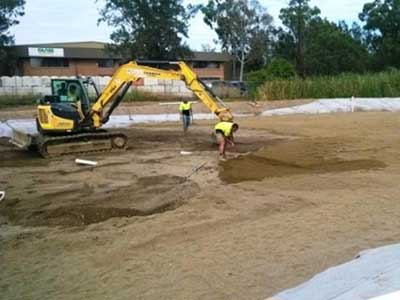
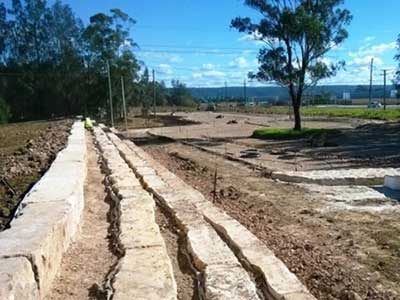
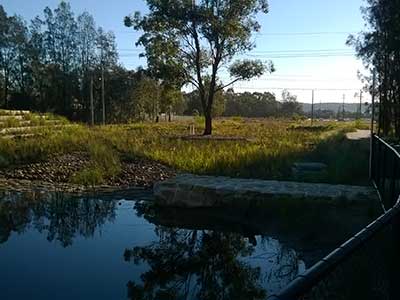
Bioretention Systems and What They Do
Stormwater impacts
When rain falls on vegetated areas such as bushland it is filtered by soil and plants, and soaks back into the ground. When rain falls on hard surfaces such as rooftops and roads it cannot soak into the ground and becomes stormwater runoff. Stormwater runoff picks up pollution such as dirt, chemicals and litter, carrying them into stormwater drains and into waterways. These pollutants contains nutrients that can cause algal growth.
What is a bioretention basin and what does it do?
Bioretention basins are designed to remove a wide range of pollutants from stormwater runoff. When stormwater is redirected into the bioretention basin it ponds temporarily before being slowly filtered by native plants. As the stormwater seeps through the layers of soils, sand and gravel, the plants absorb nutrients like nitrogen and phosphorus. Fine sediments and other pollutants are also captured. Bioretention basins also reduce the amount of stormwater that would otherwise wash pollutants into river and creeks.
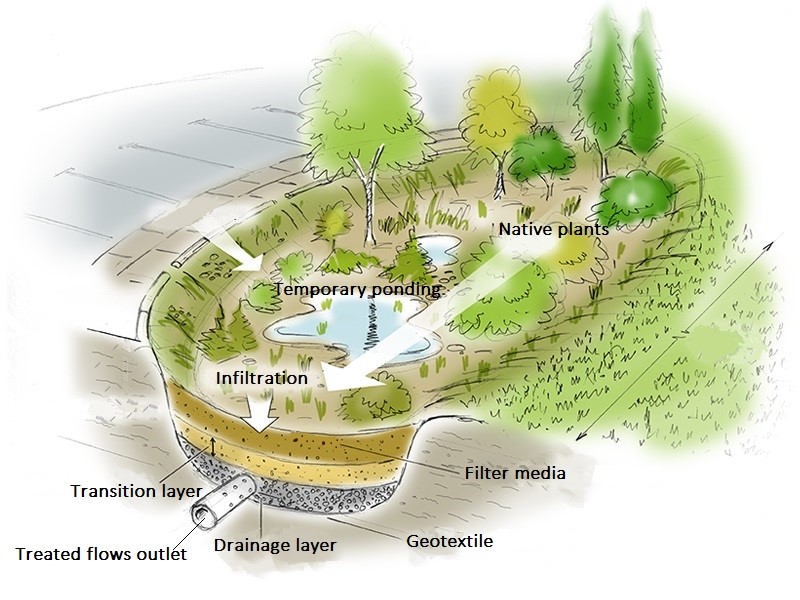
Frequently asked questions
No. Water will only pond for a few hours after rain. Using the correct soils and plants will allow it to filter and drain away quickly.
No. The basins drain within a few hours of most storms. Any mosquito eggs will die before they have a chance to hatch.

